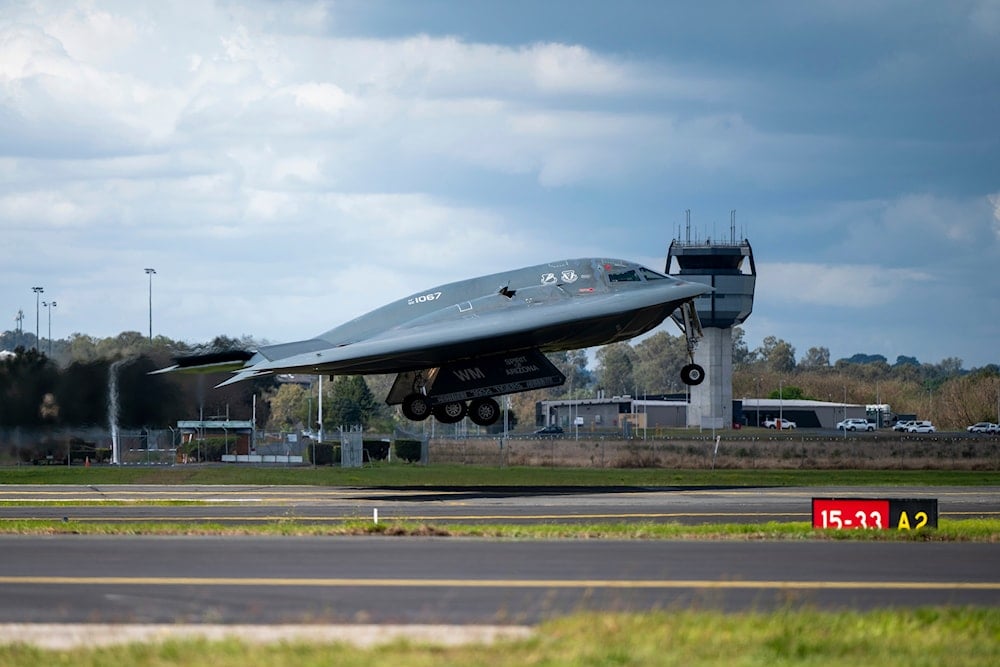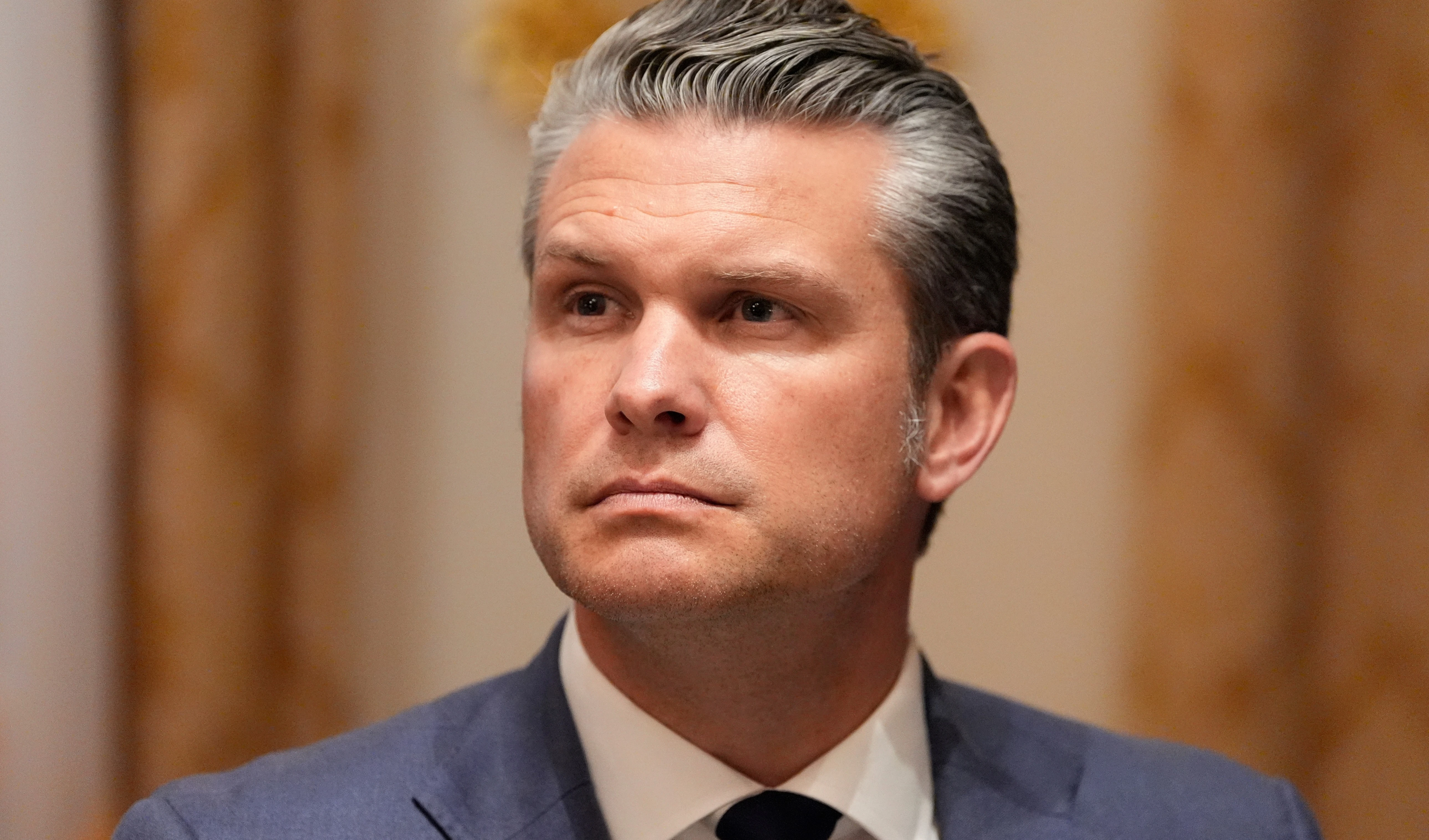US stealth bombers sent to Pacific as Trump weighs Iran strikes
B-2 stealth bombers equipped were spotted flying toward the Pacific, amid speculation that Trump may join "Israel" in striking Iran's nuclear sites.
-

US Air Force B-2 Spirit stealth bomber takes off from a Royal Australian Air Force base in Amberley, Australia, Sept. 11, 2024 (AP)
US stealth bombers were spotted flying toward the Pacific Ocean on Saturday, according to tracking data and media reports, fueling speculation about their mission as President Donald Trump considers joining "Israel" in aggression against Iran and attacking Iranian nuclear sites.
Multiple B-2 stealth bombers departed from a US Air Force base in the central United States overnight, accompanied by aerial refueling tankers, and were later observed flying near the California coast, according to reports from The New York Times and aviation tracking websites.
The B-2 stealth bomber, equipped to deliver the US military's largest payloads, can carry weapons such as the massive GBU-57 "bunker-buster" bomb, a 30,000-pound (13,607 kg) precision-guided munition designed to penetrate up to 200 feet (61 meters) below ground before detonating. The GBU-57 bomb is the only bomb allegedly capable of attacking Iran's deep underground nuclear facilities.
According to AFP, the Pentagon directed inquiries about the mission to the White House, where officials did not provide an immediate response at the time of reporting.
Trump's signals remain ambiguous
President Donald Trump, who typically spends weekends outside Washington, is scheduled to arrive back at the White House on Saturday evening for what officials have only described as a "National Security Meeting," with no further details provided about the agenda or participants.
The US President stated on Friday that Iran faced a strict two-week window to prevent potential US military action, suggesting he might authorize strikes before the deadline he had publicly set just one day earlier.
US President Donald Trump suggested on June 20 that he could potentially back a ceasefire between the Israelis and Iran, though he emphasized that pausing hostilities would prove challenging while Israeli forces continue demonstrating military success in the conflict.
Responding to questions about supporting a ceasefire, President Trump told reporters, "I might, depending on the circumstances," while adding, "It’s very hard to stop when you look at it," and explaining, "Israel is doing well in terms of war, and I think you would say that Iran is doing less well," before concluding, "It’s a little bit hard to get somebody to stop."
President Trump dismissed any discussion of sending US ground troops to Iran, stating, "I'm not going to talk about ground forces," and emphasizing, "The last thing you want to do is ground forces," when questioned about potential military deployments to the region.
Trump's delay exposes Israeli limits
The New York Times on Friday reported that Trump's decision to postpone military action against Iran has placed "Israel" in a precarious position, revealing the limits of its military reach and increasing pressure on its overstretched defense systems.
For days, Israeli officials had anticipated American intervention to help strike Iran's Fordow nuclear facility, a peaceful enrichment site deeply embedded in the mountains of northern Iran.
According to analysts cited by NYT, only the US possesses the specialized bunker-busting bombs capable of damaging such a site. But with Trump choosing to delay any decision for up to two weeks, "Israel" is left to confront its own limitations.
This hesitation from Washington reflects a broader strategic truth: that "Israel" is unable to neutralize Iran's nuclear infrastructure without external help. While Prime Minister Benjamin Netanyahu claimed, "We will achieve all of our objectives, all of their nuclear facilities. We have the power to do so," Israeli military analysts have openly acknowledged the shortcomings.
Itamar Rabinovich, a former Israeli ambassador to the US, stated plainly, "It probably won't be on the scale of what the US can achieve. If we could do what the US can, we would have already done it."

 4 Min Read
4 Min Read










